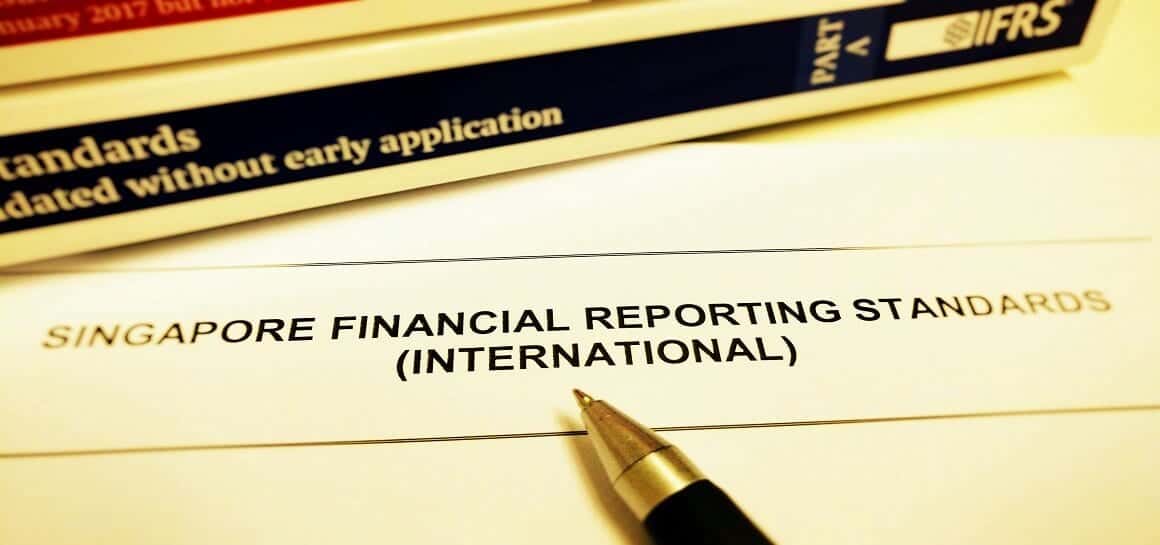
Barry Jay Epstein, Ph.D., CPA, Accounting Expert at Epstein + Nach LLC
and

Eva K. Jermakowicz, Ph.D., CPA Professor, College of Business Tennessee State University
The current novel coronavirus (COVID-19) epidemic is causing huge concern and disruption throughout the world, for obvious reasons, and the primary concerns for many must be personal safety, economic instability and financial devastation, and the urgent need for the development of solutions to the disease’s problems, primarily via treatments and inoculations. However, for most of us, life will continue, and with it the need to return to our day-to-day responsibilities, including — for professional accountants and their clients — the auditing of, and opining on, the financial statements of thousands of publicly-held and private enterprises. The economy cannot really return to some semblance of normality unless lenders, regulators, owners, managers and other so-called stakeholders once again have access to decision-relevant and reliable financial information.

Business failures are recognized as being a lagging indicator of systemic economic problems. Many businesses crippled during, say, a business recession will struggle on for a period of time, sometimes even for several years, before ultimately succumbing to the injuries incurred during a downturn, such as from the depletion of working capital needed to replenish inventories, reduced availability of credit, and loss of customers. The current pandemic promises to be worse: due to many structural factors, such as the already ongoing but now intensified trend to replace shopping at physical retail stores with on-line alternatives, the ranks of mortally wounded but still living businesses may well be greater than typical. Among other broad concerns, this raises a red flag for auditors, which in turn will have ramifications for their client companies.
The profession has already undergone close scrutiny and suffered widespread criticisms over several decades for lack of sufficient skepticism and for other ostensible breaches of the professional standards. A vast multitude of SEC enforcement actions, civil lawsuits, and news reports of large-scale frauds have branded into the public’s collective consciousness the refrain, “where were the auditors?” The profession has struggled, with debatable success, to recover its prized standing as society’s watchdogs over the veracity of financial reporting. Some will use the current crisis to bootstrap radical changes. Now, however, is not the time for a rush to ill-considered or politically-driven proposals for new auditing standards. Rather, it is the time for a renewed emphasis on the old auditing verities and virtues, which will serve the profession in good stead if truly embraced and enforced.
Following are the most significant of the auditing practices that cry out for renewed attention in the current climate of economic uncertainty.
Going concern uncertainties
Under International Standards on Auditing (ISA) 570 (revised 2016), auditors must be attentive to the likelihood that the reporting entity will continue in existence for a reasonable period of time, defined as at least one year, after the issuance of the auditor’s report, for two major but distinct reasons. Firstly, if substantial doubt exists regarding survivability over one year from the date that the financial statements are issued (or within one year after the date that the financial statements are available to be issued), this doubt must be flagged in both the financial statements and the auditor’s report, to convey to users the nature of this existential uncertainty. And secondly, many of the amounts presented in the financial statements for various captions or categories, such as long-lived assets, may need to be adjusted to deal with impairment issues, driven by the questionable time available over which to recover recorded amounts, e.g., for long-lived assets being amortized over lengthier lives.
Even under normal circumstances, the question of substantial doubt about an entity’s ability to continue as a going concern is a very challenging one for auditors to address, but experience has shown that a failure to do so, in the event of a subsequent bankruptcy or later “big bath” write off of assets or accrual or disclosure of previously unforeseen contingent obligations, will often invite litigation against the putatively negligent auditors, depending on the relative litigiousness of the national culture. This risk will be enormously enhanced if the post-crisis economy reveals failures to disclose, at a minimum, or formally record the impact of likely enterprise failure.
Even the one year minimum horizon for such prognostications under ISA 570 may prove not to be iron-clad if creditors or other harmed parties can point to indicia of impairments that, arguably, should have been recognized and reported long before the fatal blows brought down the reporting entity. Given the serious and fundamental harm that has already been (and will to an even greater degree before this crisis passes be) done to many, many businesses and other societal institutions, the need to carefully and thoroughly make going concern assessments will rise to near-paramount importance in the conduct of routine audits. Inasmuch as the primary responsibility for making such assessments lies with client management, the assumptions underlying them will be subject to audit attention and, given the inherent challenges attendant to making any such evaluations, tense discussions or negotiations between auditors and their clients’ managements may become the norm.
Internal controls over the financial reporting process
The importance of internal control to the integrity of the financial reporting process is too well-understood to require detail review here, and for purposes of this brief narrative, it is presumed that an audit of the reporting entity’s financial statements will not include an opinion on the operating effectiveness of its internal control over its financial reporting process, per se. Nonetheless, even a routine audit must consider this question. In the post-coronavirus pandemic periods, when matters such as asset valuations and the completeness of informative disclosures are expected to be responsive to greater uncertainties, the efficacy of the reporting entity’s processes –– intended (per ISA 315, revised 2013) to assure accuracy and timeliness of reflecting the transactions and dispositions of the assets of the entity, transaction recordations necessary to permit the preparation of financial statements in accordance with the applicable financial reporting framework, the recognition of receipts and expenditures made only in accordance with authorizations of management and those charged with governance, and the provision of reasonable assurance regarding prevention, or timely detection and correction of unauthorized acquisition, use, or disposition of the entity’s assets that could have a material effect on the financial statements –– will become more problematic for auditors. A corollary to this enhanced challenge for auditors is that greater contentiousness between auditors and their clients may also be anticipated. Among other implications, reporting entities having only marginally effective or incompletely documented internal controls would be well served to address these weaknesses before they become impediments to the successful completion of upcoming audits.
Accordingly, even in the circumstance of substantive-oriented audits, where the quality of the entities’ internal controls over the financial reporting processes has historically been deemed as less-than-stellar, and thus unworthy of testing and reliance, it is argued that heightened consideration be given to these matters, if only to address the greater uncertainties that may impact asset valuations, disclosures of risk factors, and other reporting matters. At minimum, auditors will be expected to document how these concerns informed their audit planning and procedures, lest a failure to take seriously these complicating factors become a matter of contention in later claims by stakeholders.

Assessing the Risks of Material Misstatement and Designing Further Audit Procedures
Risk assessment procedures must be performed in order to, inter alia, identify the risks of material misstatement, whether due to error or fraud, at the financial statement and relevant assertion levels (also found in IAS 315, revised 2013). This risk assessment is not addressed merely at the inception of the engagement, but rather must continue throughout the audit. The standard recognizes that this is a complex and ongoing process, and this will be made more difficult, and vital, given the uncertain economic outlook in the wake of the pandemic, which can reasonably be anticipated to have consequences for an overall audit strategy and audit plan. Not only must the coronavirus and economic implications be given initial planning consideration – e.g., regarding on-location inventory observations –– but also the changing impacts and expectations of this crisis should inform plans and actions as the audit progresses, consistent with applicable provisions of the standard.
Asset valuations, including goodwill
Asset valuations will become a major point of dispute as businesses seek to restart full operations in an environment that might well have been altered in profound and permanent ways by the shut-down, which may have accelerated and made visible fundamental changes already in process but as-yet unaddressed by preparers and auditors of financial reports.
Under auditing standards (ISA 330, revised 2009), substantive procedures, including both tests of details and substantive analytical procedures, as well as tests of controls, must be planned and conducted to detect misstatements that are material at the financial statement assertion level. Assertions are commonly defined to include, inter alia, accuracy, completeness, occurrence, rights and obligations, and understandability. With specific regard to assets, existence and valuation are of supreme importance. In the authors’ opinion, audit documentation in the post-coronavirus era should clearly set forth how enhanced risks, particularly of overstatements of asset valuations, are being addressed in the conduct of audit engagements.
Goodwill, where it is recognized in financial statements, arises primarily as a consequence of business combinations, and is subject to regular impairment testing because of both its typically ephemeral nature and the widely publicized experiences regarding sudden revelations of lost value in the past. Always challenging to evaluate, representations of goodwill are expected to become even more questionable as the going concern value of acquired businesses are reassessed in light of the post-coronavirus era changes to the economic landscape. As always, management is primarily responsible for making these assessments, but — again per usual — the auditors will be judged harshly if these appraisals are found to have been flawed.
Sufficient appropriate audit evidence
Professional standards (ISA 500, revised 2009) require that auditors design and perform procedures that are suitable in the circumstances for the purpose of obtaining sufficient appropriate audit evidence. Such evidential matter must be relevant and reliable. Given present circumstances, ceteris paribus, a wider net might need to be cast to gather all evidence that meets the criterion of relevancy.
Auditors should apply “fresh thinking” to the explication of any catalogue of potentially useful and pertinent sources of evidence, a process which is often best done in planning “brainstorming” sessions held with all assigned staff. Furthermore, the reliability of audit evidence should be closely scrutinized and challenged, with perhaps a higher threshold set for acceptance of indicators of valuations and contingencies, among others.
Skepticism
Professional skepticism is of course the sine qua non of any compliant audit engagement (ISA 240, revised 2009), and an insufficiency of skepticism is the root cause of most, if not all, audit failures. As the standards note, “(w)hen obtaining reasonable assurance, the auditor is responsible for maintaining professional skepticism throughout the audit, considering the potential for management override of controls, and recognizing the fact that audit procedures that are effective for detecting error may not be effective in detecting fraud.”
Enhanced skepticism would seem to be warranted now that managements are being stressed and distracted by the need to focus on operational and financial recovery from the crisis, which in some extreme circumstances could even drive them to attempt to “window dress” financial positions and results, in order to, e.g., allay creditor concerns. Even absent any fraudulent intent, however, the diversion of managerial attention from mundane recordation and reporting duties must be understood to enhance risks for auditors. Given this fact, coupled with long-noted widespread insufficiencies in auditor skepticism, it would well behoove auditors to overtly re-visit their commitment to this bedrock requirement of the audit process. As a corollary matter, clients should expect to be challenged by auditors even regarding underlying assumptions long taken “with a grain of salt” by the auditors.
Uncertainties more generally
Clearly, whether in the context of asset valuations, disclosure of going concern and other reservations affecting reporting, dealing with — and ensuring an honest airing of — uncertainties will be a major challenge. Even for non-publicly-held entities, not subject to the securities-regulator-mandated “management discussion and analysis of risks” or equivalent disclosures, it makes sense to candidly reveal, via informative disclosures (“footnotes”), the issues facing business enterprises reporting in this coronavirus pandemic period and the likely impacted years to follow.
Although amounts set forth in financial statements are presented as exact quantities, and notwithstanding a general appreciation that, perhaps apart from cash on hand, these often are based on approximations, the real extent of uncertainty may need to be made more explicit than in the past. The long-ago academically-proposed concept of “matrix reporting,” whereby key captions (e.g., inventories, fixed assets, contingencies) would be expressed as a range of values (e.g., low estimate, best estimate, high estimate) never gained traction, in part because it was deemed to introduce too much confusion into the financial reporting process. Perhaps, to a limited extent at least, this concept could now be revisited, possibly for narrative portions of the footnotes, to convey more fully to users the expanded uncertainties now impacting reported transactions and balances. Doing so might educate both internal decision makers and external stakeholders, and have the additional salutary effect of providing auditors with an added layer of protection against unfair accusations of audit failure.
Where the current circumstances have had a significant impact on the delivery of the audit, the auditor will need to explain this in the report, for example, by reporting on critical audit matters (CAMs), a recently promulgated requirement that is partially effective now.
In conclusion, the novel coronavirus crisis demands immediate audit attention and, in the longer run, might also contribute to a useful rededication to auditing excellence. Clients should not only anticipate this, but actually welcome it as a meaningful contribution toward the strengthening of capital markets.









